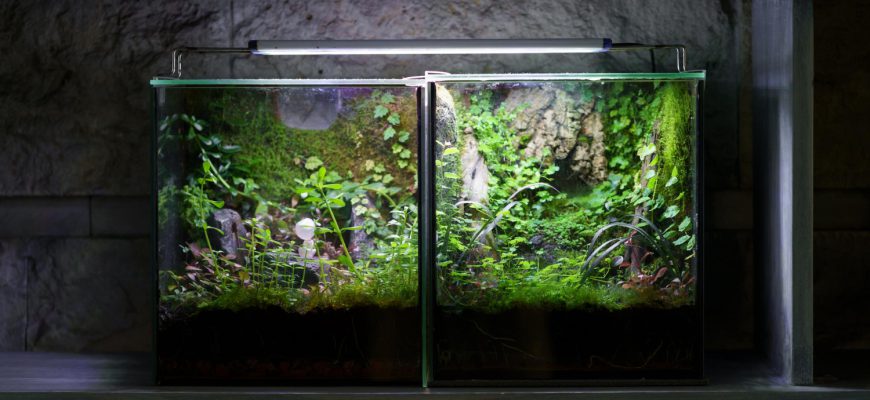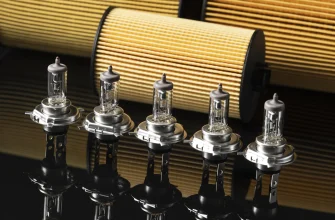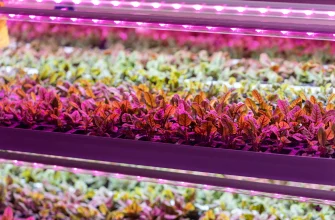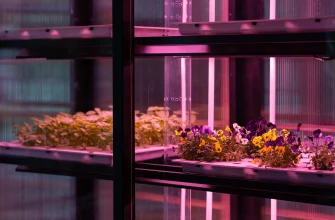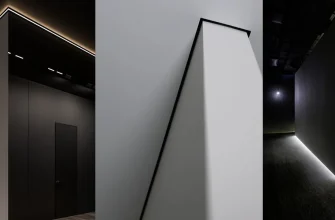Proper aquarium lighting guarantees a minimum of care for its inhabitants. It is important to create conditions that are as close to the natural environment as possible. In this article, we’ll take a look at how to choose lighting for an aquarium and what requirements are set for lighting.
Why is it so important to choose the right lighting for an aquarium?
Artificial aquarium lighting is not just for beauty – it is the basis of the life of organisms. The life cycle of fish is based on the length of daylight hours. For plants and microorganisms living in water, light is an integral part of nutrition and metabolism.
The choice of lighting for an aquarium is critical to the health of the ecosystem, as light directly affects the life processes of aquatic life:
- Regulates biological cycles. The periodicity of the change of “day” and “night” in the aquarium can regulate the biological cycles of fish and algae. Properly selected lighting maintains a periodicity that is as close to the natural regime as possible, which is important for the health of the aquarium inhabitants.
- Promotes photosynthesis. Lighting is necessary for photosynthesis – under the influence of light, aquatic plants absorb nutrients from the environment and produce oxygen. Without proper lighting, it will be difficult for plants to grow, resulting in an unhealthy aquarium environment.
- Controls algae growth. Properly selected mode and type of lighting helps to control the growth rate of algae. Excessive growth of microorganisms can lead to “blooming” of water and deterioration of fish and plant health.
- Supports coral growth. If the aquarium has a reef, proper lighting is crucial for coral growth. Corals need light with a certain wavelength, without which they can be stunted or even die.
Proper lighting is also important for the decorative effect of the aquarium. The play of light and shadow emphasizes the beauty of the aquatic world, allows you to better see the patterns on the bodies of tropical fish or observe the fluctuations of algae.
What should be the color temperature of aquarium lamps?
When choosing lighting for an aquarium, it is important to consider the needs of its inhabitants. If the fish and algae get sick, the aesthetic appearance of the aquarium will lose its value. The gradation of radiation spectra depends on the type of aquatic environment:
- 5500…6500 K – warm white light. Suitable for small freshwater aquariums, as it reproduces a spectrum close to sunlight, which promotes photosynthesis. Practically not used in aquariums with salt water.
- 6500…10000 K – cold daylight with a bluish tint. Ideal for marine aquariums with salt water.
- 10000…20000 K – intense cold blue light. The rays imitate the spectrum of ocean blue light, which is important for the healthy growth of marine fish and corals.
- Actinic light (420…460 nm ) – used for reef and deep sea aquariums. It emits a spectrum with blue-violet rays, which are important for coral growth and are partially invisible to the human eye.
Types of lamps for aquariums
It is important that the light source evenly illuminates the entire volume of the aquarium, including the bottom, to create a healthy microclimate. The approach to choosing lamps differs depending on the depth and volume of the aquarium. There are open (external) and closed (submersible) lamps.
Open type lamps
The most common type of lighting fixtures that are placed in the upper part of the aquarium – on the lid, console or suspensions. The lamps are halogen, fluorescent or LED. They are mounted in a housing with a reflector that scatters and directs light onto the water surface of the aquarium.
The peculiarity of open-type lamps is the absence of additional protection against water ingress. They are installed at a distance of 15-20 cm from the water surface and provide good illumination of the upper layer of the aquarium.
Closed type luminaires
In aquariums of great depth or densely populated with algae, closed-type submersible lights have the best effect. They have a sealed design and use an LED strip or LED strip as a light source, usually mounted in a silicone tube. It is important to ensure proper electrical insulation of all components.
Submersible lights provide better lighting efficiency in deep aquariums. Flex Neon (cold neon) is particularly well suited – flexible neon tubes with maximum moisture protection, which are effective in terms of energy saving and safety for the inhabitants.
What should I consider when choosing aquarium lighting?

The lighting system for aquariums is assembled individually for each case. There is no universal system, because when choosing components, the individual characteristics of the aquarium and living organisms are taken into account. Lighting parameters depend on the type of aquarium (marine or freshwater), its flora and fauna.
Power
The power of the lamp should provide a luminous flux that penetrates the entire water column. The needs of the aquarium inhabitants must also be taken into account, so the specific power factor is used, multiplying the volume of the aquarium in liters. The total lighting power is distributed among the lighting devices – lamps on the lid, open side lights, and submersible lights.
Protection level
After calculating the power, you need to select the IP rating for the luminaire. The higher the IP, the lower the risk of short circuits or other problems due to water:
- up to IP40 – for wall and aquarium installation at a distance of at least 20 cm from the water surface.
- IP40…65/67 – for external lamps on the aquarium lid.
- IP67 – for closed submersible luminaires.
Controlling devices
The lighting systems use LEDs, strips, strips, tube lamps or lamps on a base. The electrical circuit is assembled individually for each aquarium. It is important that the lighting meets the needs of the aquarium inhabitants as much as possible and is easy to control. Therefore, it is recommended to use a controller or at least a timer.
The duration of lighting should be 8-10 hours, depending on the location of the aquarium and population density:
- An aquarium near a window – the lamp is turned on for several hours in the late afternoon.
- An aquarium in a darkened room – the lighting is on all day as an alternative to natural light.
An increase in daylight hours beyond 10 hours is undesirable, as it can lead to algae growth and adversely affect fish. To avoid sudden transitions from light to dark, it is recommended to use a controller or timer.
